Inside the Plush California Home (and Glamorous World) of a Restaurant Tycoon — and Artist: Hanging With Mr. Chow
BY Catherine D. AnsponMichael Chow certainly makes an impression.
AFTER A 50-YEAR HIATUS, ONE OF THE WORLD’S MOST CELEBRATED RESTAURATEURS RETURNS TO HIS ART STUDIO
In a leafy enclave near Beverly Hills, a noted restaurateur designed an extraordinarily glamorous home in the most elegant and understated way. Here, you’ll find Ruhlmann furniture, light washing the interiors, and a pair of massive Mexican colonial antique doors at the entrance that embrace a Keith Haring canvas of equal size. More impressive art awaits inside — but just the right amount, from Julian Schnabel to Ed Ruscha, all of museum scale and caliber. But this is not the story of a collector. For on the other side of the pool, arcaded windows are spattered with paint. This is the journey of an artist.
Michael Chow has forged a restaurant brand with an imprint that, half a century after its creation, is synonymous with global glamour, celebrity, and a sense of dining as part of a grand salon. All along, the art community has embraced the Shanghai-born entrepreneur’s take on Chinese cuisine, from its founding in 1968 in London to the smoldering ’70s and go-go ’80s in Beverly Hills and New York. In particular, Mr. Chow’s 57th Street Manhattan locale was de facto headquarters for Andy Warhol, Francesco Clemente, Keith Haring, Jean-Michel Basquiat, and all the ’80s art stars. The restaurant — and Mr. Chow himself — appear in pivotal scenes in Basquiat, directed by Julian Schnabel, a Chow confidant.
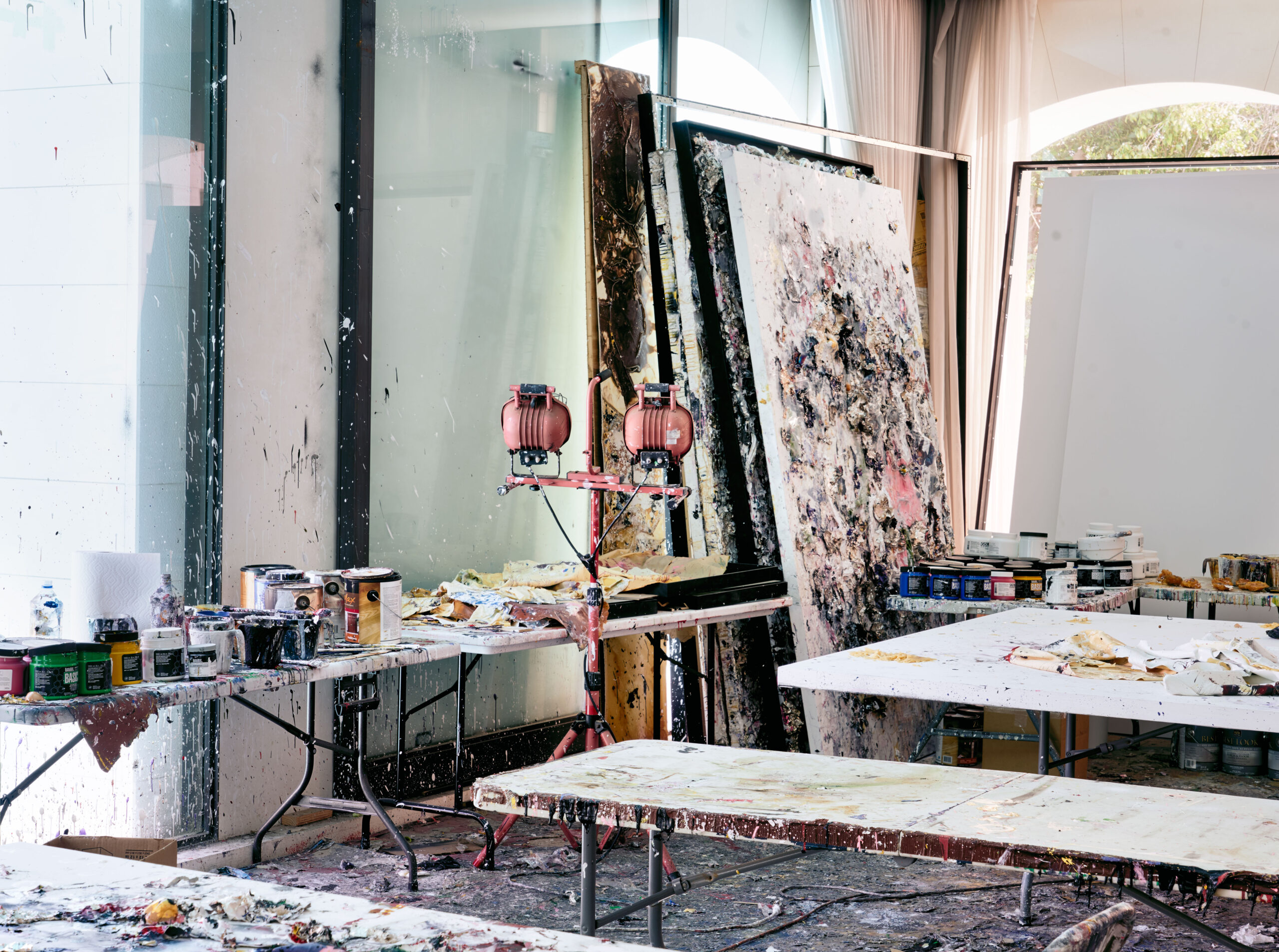
All this we know about Chow. But few comprehend his complicated path as a refugee child of one of China’s most famous cultural icons, nor know the story of his early life as a painter. After a stint studying at St. Martin’s in London, he abandoned his brushes and canvas. It was the swinging ’60s — not the time for an Asian émigré to make it in the art world. Decades before globalism became a calling card, being Chinese was met with prejudice; the art scene was largely the province of big male painters of Caucasian ancestry.
Flash forward five decades. The occasion for our visit with Chow was aligned with his first personal appearance as an artist in Texas, at the upcoming Texas Contemporary Art Fair in Houston (September 29 through October 2). He had returned to painting a few years earlier and catapulted into the limelight with exhibitions in his hometown of Shanghai, as well as Beijing, Hong Kong, and, this spring, the Warhol Museum in Pittsburgh. All this put Chow (born Zhou Yinghua in 1939), his work, and his life in fresh context. An accompanying volume has recently been released. Conceived as a dialogue between Chow and his late father, Zhou Xinfang — one of the most storied performing artists in China, renowned for his role in the Peking Opera as actor, director, and innovator — the book is a mediation on the present and past, highlighting a connection between father and son undiminished by decades spent apart because of political crisis.
A short film clip, distributed by L.A.’s Museum of Contemporary Art [MOCA], conveys the energy and decisiveness of his return. Screen the seven-minute Recipe for a Painter, and you’ll be transfixed by Chow’s prowess. In an era in which the second wave of ab-ex painting is giving way to a third wave, Chow’s amalgamation of new media, surprising ingredients, and bravura brushstrokes challenges traditional painting constructs and melds into wall-mounted sculpture. These canvases demand to be seen in person. Performance art, conceptualism, and a sense of the grandeur of Chinese painting are all present.
The Chow home, which he shares with his wife, the glamorous Eva Chow, subtly fuses East and West, which is also a metaphor for the restaurant whose success built it. Sequestered along a quiet street within Holmby Hills, a few telling details mark it as Chow’s own. Chunks of translucent rocks delineate the corners of the exterior wall, creating a sense of ceremony. Gallerist Cindy Lisica and I arrive after our photo crew. We buzz the call button, and the gate swings open. As we walk through the imposing portal of massive Mexican colonial doors, a painting by Chow is to the left; across from it, a canvas by Keith Haring, both works of epic scale.
The main portion of the house, a two-story salon, has fireplaces on opposing ends of a long, rectangular room. A second-floor clerestory floods the space with light, as the windows lining the loggia look out upon a Hockney-esque pool and the structure that is Chow’s current studio. The restaurateur designed the home’s interiors and architecture, which possess Asian and Deco undertones.
Chow’s canvases, resting on cans of acrylic paint, are the only disquieting aspect of the scene. The ample, sculptural paintings line the entire salon, in the company of an impressive Ed Ruscha. A Julian Schnabel “Big Girl” painting faces off above one fireplace, while a Chow creation of notable size holds its own on an opposite wall.
Our crew moves quietly through the rooms, led by Chow’s assistant. There’s a drawing room with Art Deco furnishings (predominately Ruhlmann) with a Chow canvas of crumpled planes of sterling silver above a rouge marble Deco fireplace. The library is punctuated by a John Chamberlain sculpture the size of a man.
Then there is Chow’s studio. Sited in a stone building by the cinematic pool, it houses a subterranean film-screening room, where porthole windows peer into the depths of the pool, clandestinely watching for swimmers. Its main artwork is a succinct little painting of a hamburger by Andy Warhol.
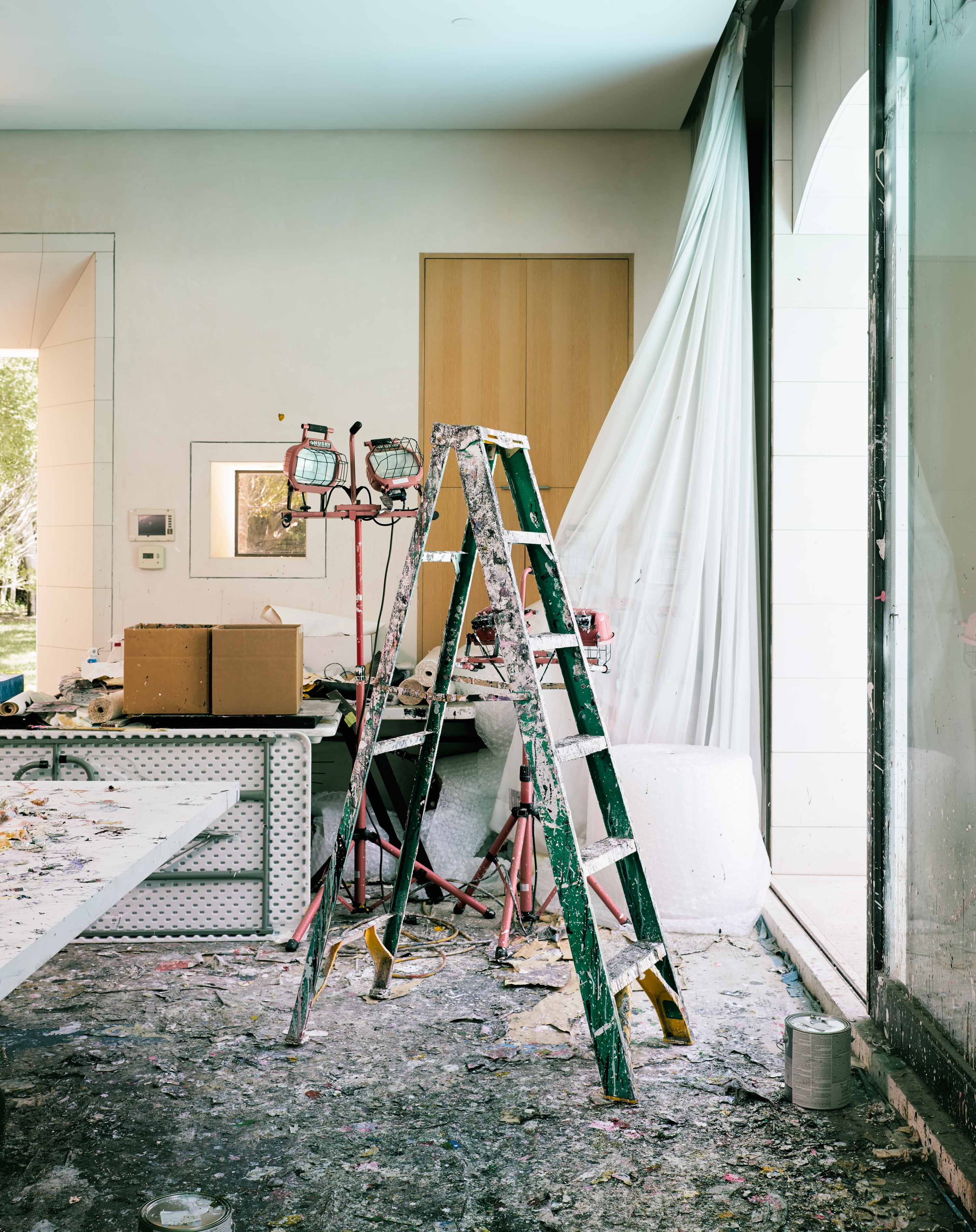
But the true magic happens aboveground, in the studio itself. Being left uninterrupted to gaze, poke through the boxes, and take in canvases in process was akin to dissecting a specimen at a science project. Skeins of plastic-feeling paint, sheets of gold, and silver leaf — prepared by a specialist and awaiting alchemical transformation on the canvas — were littered throughout and piled in cardboard boxes. Eggshells, stand-ins for the sun the artist later reveals, were also part of the equation. Three-dimensional, mountainous, dramatic surfaces of canvases resemble a topographic journey; a series of these works in progress rests horizontally on eight-foot folding tables. The expansive windows, which can slide back to provide direct access to the pool, bear waterfalls of acrylic paint.
We leave the studio in search of Chow, and soon the man of the house appears, a confident presence, trim and impeccable, and somehow managing to convey as much elegance in his painting clothes — black cotton shorts, a black tee, and oil-soaked shoes — as he does in his public guise, a bespoke Hermès suit and Philip Johnson-style eyeglasses.
He is charming, witty, and crackles with energy and intelligence, like an all-knowing father. It’s almost impossible to believe this is a man edging towards 80. A sophisticated figure, his persona is enlivened by great warmth balanced by formality, delighting in collaborating with our photo team.
When it is time for our conversation to begin, we head to the dining room, where a palette of cool neutrals is interrupted by slashes of color from a Schnabel painting. Facing the Schnabel, Chow occupies the head of the long table, and we plunge into the interview when he says, “We’ve better start because of the invasion of other people,” as a half-dozen office staff arrive.
Let’s go back to the beginning of your new chapter: How you returned to painting.
I painted for 10 years, about 60 years ago. I’m old, but don’t look old. I don’t know if that is good or bad. I started painting when I was 18 or 19, and had reasonable success. I have always been involved with the creative process. Even the restaurant is part of the theater. This recent return to art was encouraged by Julian Schnabel, my good friend. But also by Jeffrey Deitch. He saw one of my early works; he knew my creative process through the restaurant, and architecture, so he took me very seriously as an artist. He was very encouraging. So that was the beginning. Fate, I think, had a hand.
Artistic breakthrough.
I discovered a new material — silver, made into sheets — so that was my breakthrough. I did a huge painting with the silver. Ten feet by 8 feet. I did it on the floor. I’ve done hundreds since then. I said, “Wait a minute. I can do this shit.” So I got the important people to see it. They all responded. So I painted, from that moment on.
On your painting ingredients.
I created a lot of vocabulary, and some other things came to me very easily, by fate. The silver sheets are very difficult to make. I got very lucky and found a jeweler to make them. No one else can make them except him. They are solid silver. I marinated. I sculpted with it. It is a fantastic material. It gives light. And I also created paint sheets, which are very unique. By accident I discovered them.
What inspires your canvases, and the biography few know.
All my experience in my past. What I learned in my youth. It’s very complicated. My story is my father … He is like Shakespeare in China. There’s a tragedy story right there. I left China when very young. Twelve years old. Lost everything. Culture, smell, rice, the human being next to me. No relations. Nothing I can grasp on. I should have died, but I didn’t. I came through that, through that acute, frightening suffering. So here I am. So optimistic and appear to be very ha-ha-ha. I have this internal desire, this need to paint. That is inside me.
Your father and your film script.
My father is very famous, a big deal. Household name. Cultural Revolution, great tragedy. I did a movie script, which I was going to direct. A bio epic of the 20th century. My father’s life touches upon every important political event in in China. I never saw him after I was sent away from China — ever. Never wrote to him, never talked to him again. Nothing, from 12 years old on.
Then he tragically died in the Cultural Revolution. My mother was beaten to death. There’s a lot of tragedy. And a lot of disconnect between me and the West. Here, people don’t know who my father is. People don’t know anything about me. Even the restaurant is designed as theater to make Westerners respect the Chinese people, the Chinese culture. That’s what I do. And I’m very lucky in my third act, that I can paint, and that I have the luxury to do that.
You and art history.
The breakthrough painting was about four years ago. Like Barnett Newman’s zip or maybe Jeff Koons’ rabbit. Mine came very quickly. I believe in destiny and fate. It’s a romantic idea, I know. I do an old-fashioned kind of painting, although in the modern vocabulary — like caveman painting. Goya, Turner, the expressionists are inspirations. But my work is always very much influenced by the period when I first painted; the late ’50s and early ’60s.
At that time all the expressionists are in Europe. Fontana, Tàpies, I came from that school. So when I got frozen for 50 years and woke up, I adopted post-Pollock. Abstract expressionism cannot be ignored in the media of the 20th century, if you are that kind of painter.












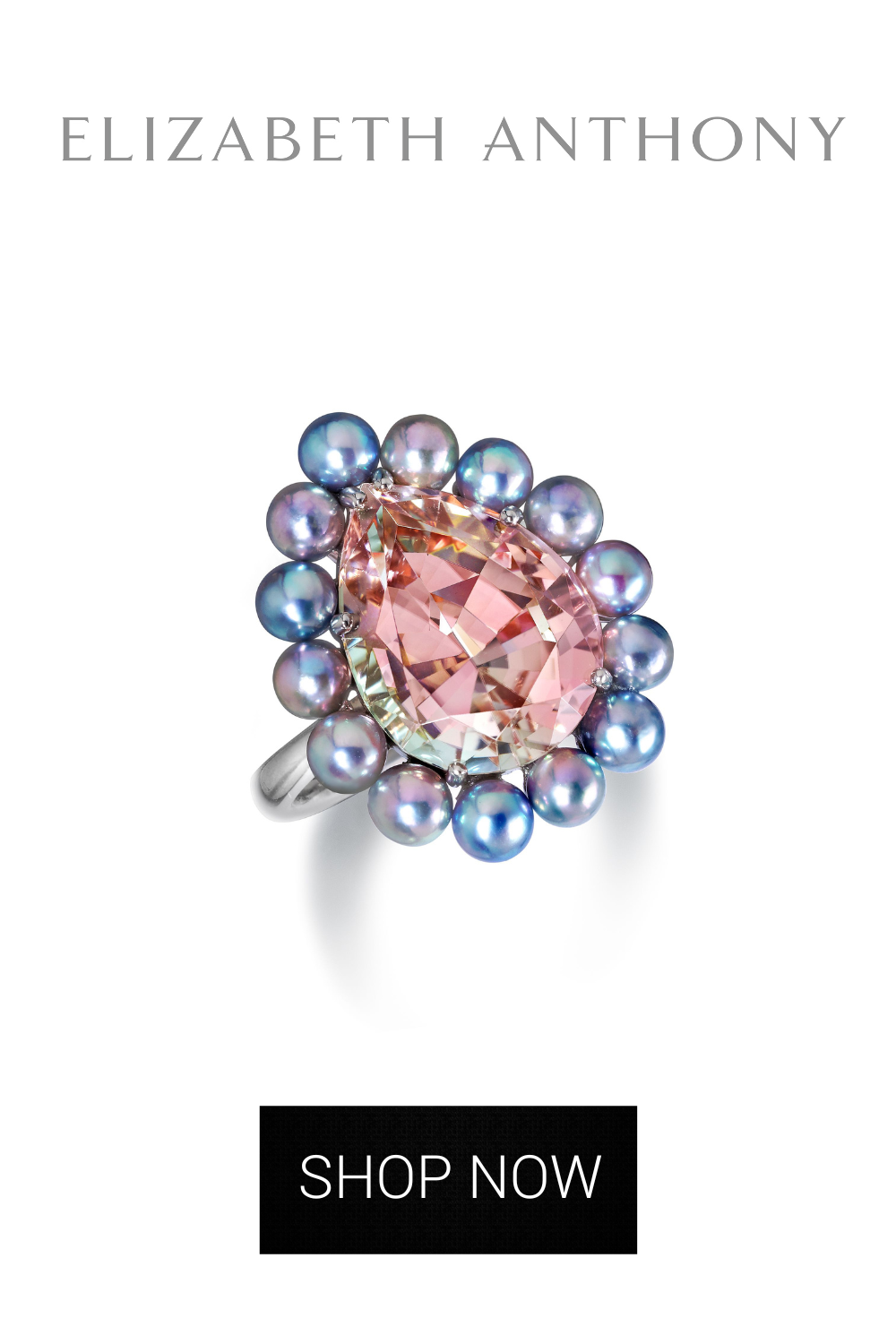





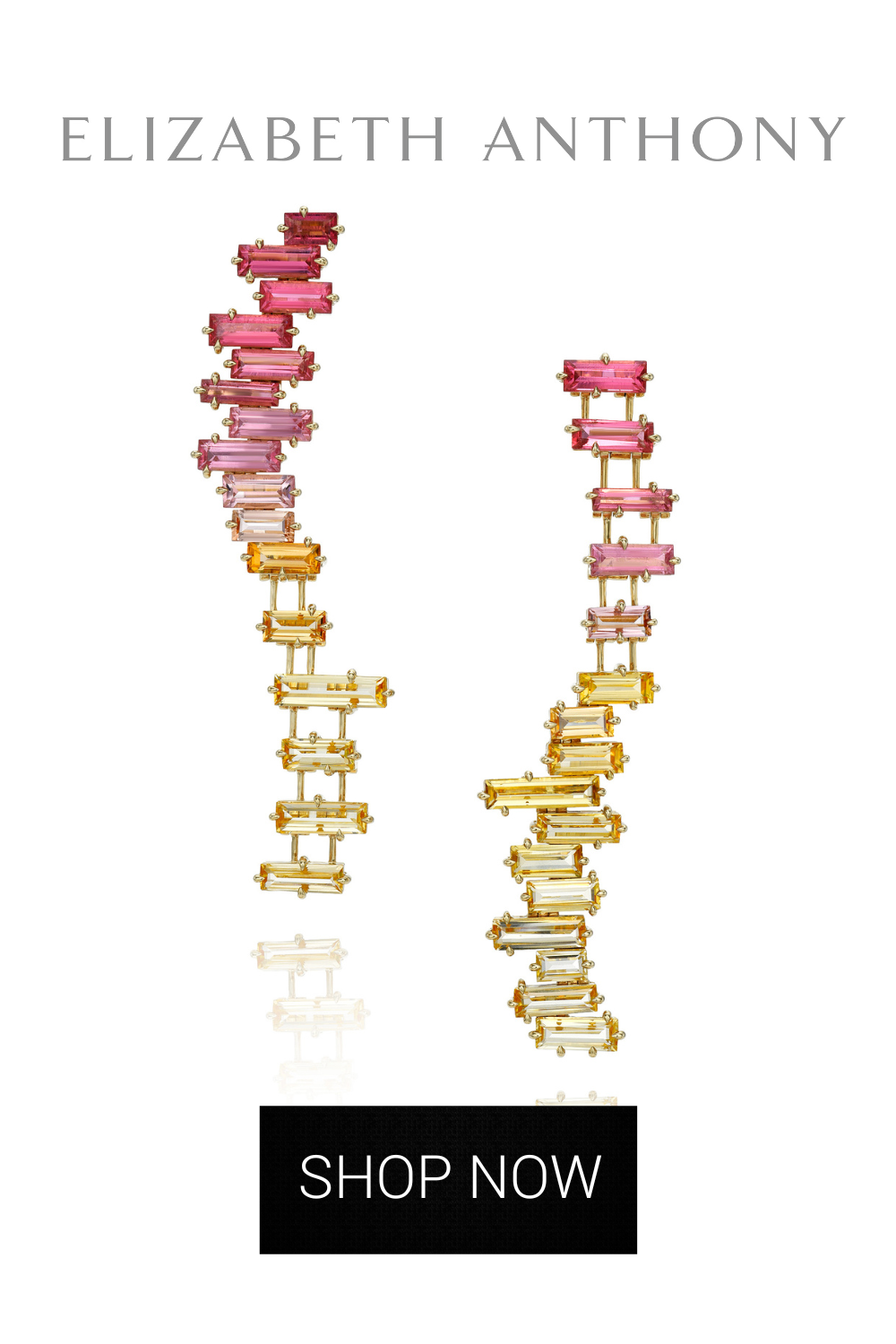



_md.jpg)










